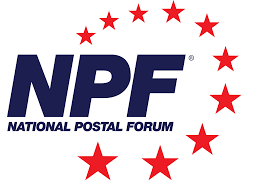National Postal Forum 2026
The National Postal Forum, or NPF, is the premier mailing and shipping conference that works directly with the United States Postal Service to provide the most comprehensive educational and networking platform for meeting the needs of the industry. Offering 130+ educational workshops, USPS Officer-led sessions and the largest mailing and shipping industry trade show, the NPF is the ideal opportunity for the industry professional to learn, collaborate and grow their business. Tension has enjoyed exhibiting at NPF for over 50 years.
NPF Recap Blogs
In our first post-NPF blog, our vice president of marketing shares our vice president of marketing shares a helpful overview of the most common acronyms used by the USPS®. Be sure to read our blog for our insights.
Featured Downloads
Are you new to direct mail or looking for a refresher on the right format for your project? Our Direct Mail Basics white paper series has the detail you need on everything from getting started with direct mail to working with the USPS to choosing the best format (e.g. envelope sizes) for your next project. Click here to access the Direct Mail Basics white paper series downloads.
If you’re a mailer, you’re likely familiar with an Intelligent Mail® barcode (IMb). But are you familiar with the information it holds? Download our popular resource “A Guide to Intelligent Mail barcodes” and learn to decode the details packed in this 65-digit code. Click here to download your copy, and enjoy!







